Dr. Phil Zeltzman’s Blog
Even dinosaurs got cancer!
We regularly talk about cancer in this blog.
And we’ve talked about one aggressive type that can affect dogs (and people) (and rarely cats): bone cancer, aka osteosarcoma.
For the first time ever, scientists just discovered that even dinosaurs got cancer!
The dinosaur in question is a Centrosaurus.
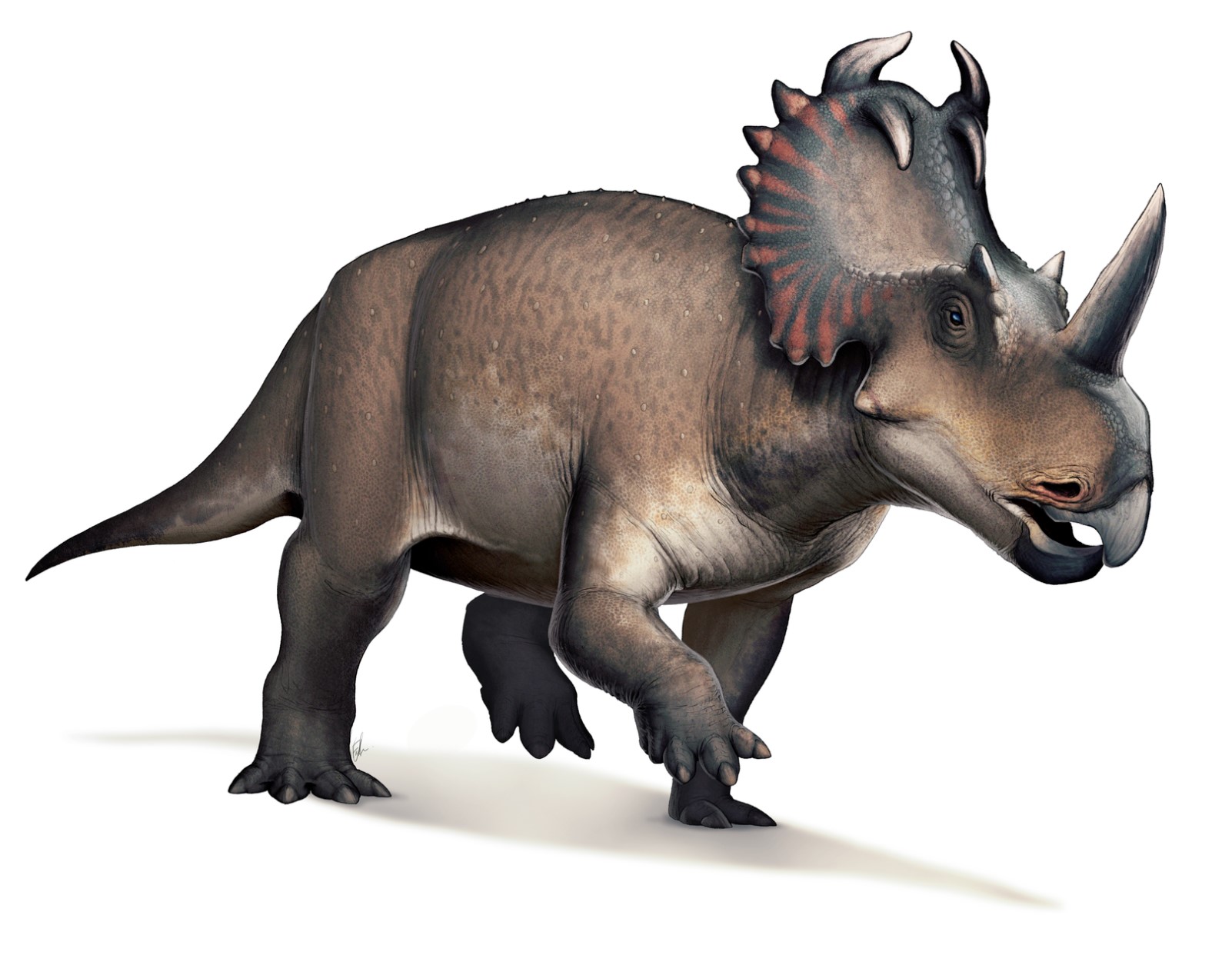
Centrosaurus was a lovely plant-eating “horned dinosaur” that stood 18 foot tall (almost 6 meters) around 76 million years ago.
Scientists from the Royal Tyrrell Museum of Paleontology (Alberta, Canada) discovered the bone with cancer in a pile of bones in Dinosaur Provincial Park in Alberta. The dinosaurs may have died in a flash flood.
The bone in question is a fibula, the small bone along the tibia or shin bone (and the sharp bone in a chicken leg or drumstick). The scientists confirmed the type of cancer via CT scans and under the microscope. The findings were published in the medical journal The Lancet.
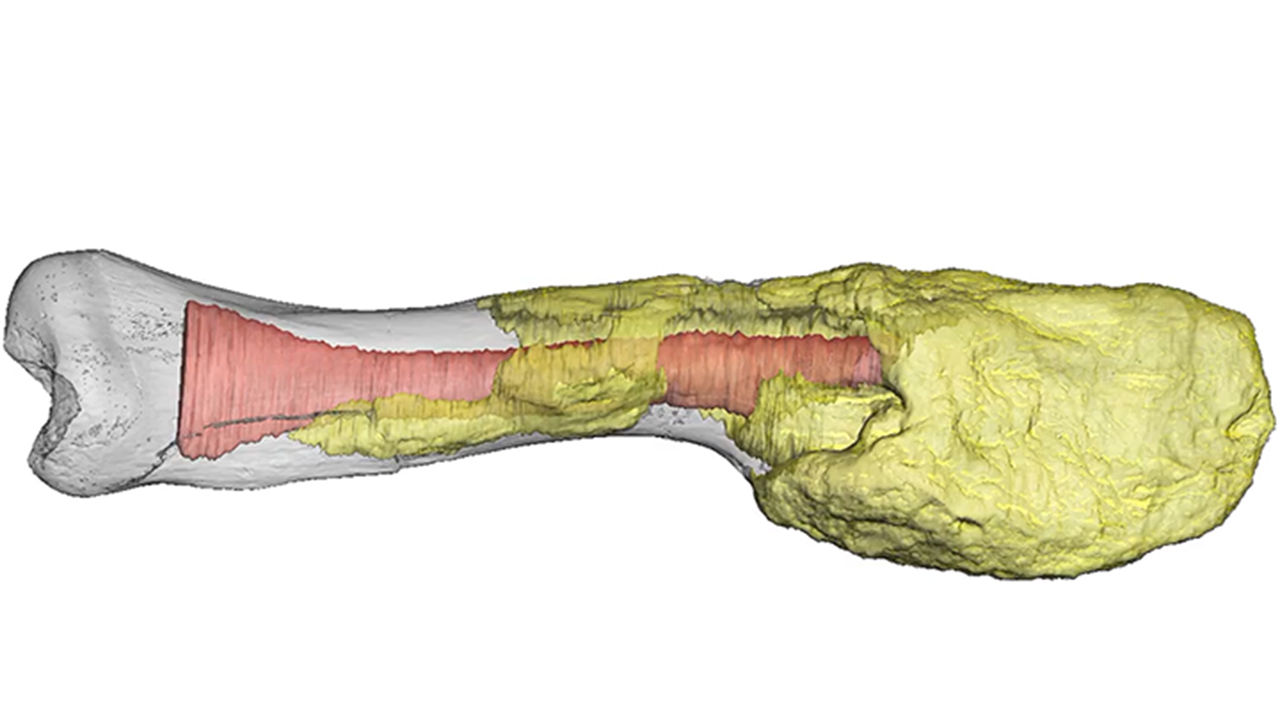
Why should we care? It’s very interesting from an evolution standpoint. It means that cancer existed when dinosaurs lived, well before mammals and reptiles became two different animals.
Royal Ontario Museum paleontologist David Evans told Smithsonian writer Riley Black: “Dinosaurs can seem like mythical creatures, but they were living, breathing animals that suffered through horrible injuries and diseases. This discovery certainly makes them more real and helps bring them to life.”
Phil Zeltzman, DVM, DACVS, CVJ, Fear Free Certified

Dr. Phil Zeltzman is a traveling veterinary surgeon in Pennsylvania & New Jersey. An award-winning author, he loves to share his adventures in practice along with information about vet medicine and surgery that can really help your pets. Dr. Zeltzman specializes in orthopedic, neurologic, cancer, and soft tissue surgeries for dogs, cats, and small exotics. By working with local family vets, he offers the best surgical care, safest anesthesia, and utmost pain management to all his patients. Sign up to get an email when he updates his blog, and follow him on Facebook, too!
This cutie is a 15 month cancer survivor!
Cartier, a now 14 year old Shih Tzu, had a cancerous tumor in a rib. So we removed 3 of her ribs at the end of 2018.

I am thrilled to report that 15 months after surgery, Cartier the cancer survivor is still doing great!
Read her amazing story here: (/blog/cartier-and-the-giant-surprise/)
Phil Zeltzman, DVM, DACVS, CVJ, Fear Free Certified

Dr. Phil Zeltzman is a traveling veterinary surgeon in Pennsylvania & New Jersey. An award-winning author, he loves to share his adventures in practice along with information about vet medicine and surgery that can really help your pets. Dr. Zeltzman specializes in orthopedic, neurologic, cancer, and soft tissue surgeries for dogs, cats, and small exotics. By working with local family vets, he offers the best surgical care, safest anesthesia, and utmost pain management to all his patients. Sign up to get an email when he updates his blog, and follow him on Facebook, too!
Are X-rays to diagnose an ACL tear a waste of money?
Pet owners regularly question why we take X-rays to diagnose an ACL tear. After all, an ACL is “soft tissue”, and you can’t see it on X-rays. This is actually a very valid point. So why bother? Is it a waste of money? Are we taking loving pet owners for a ride?
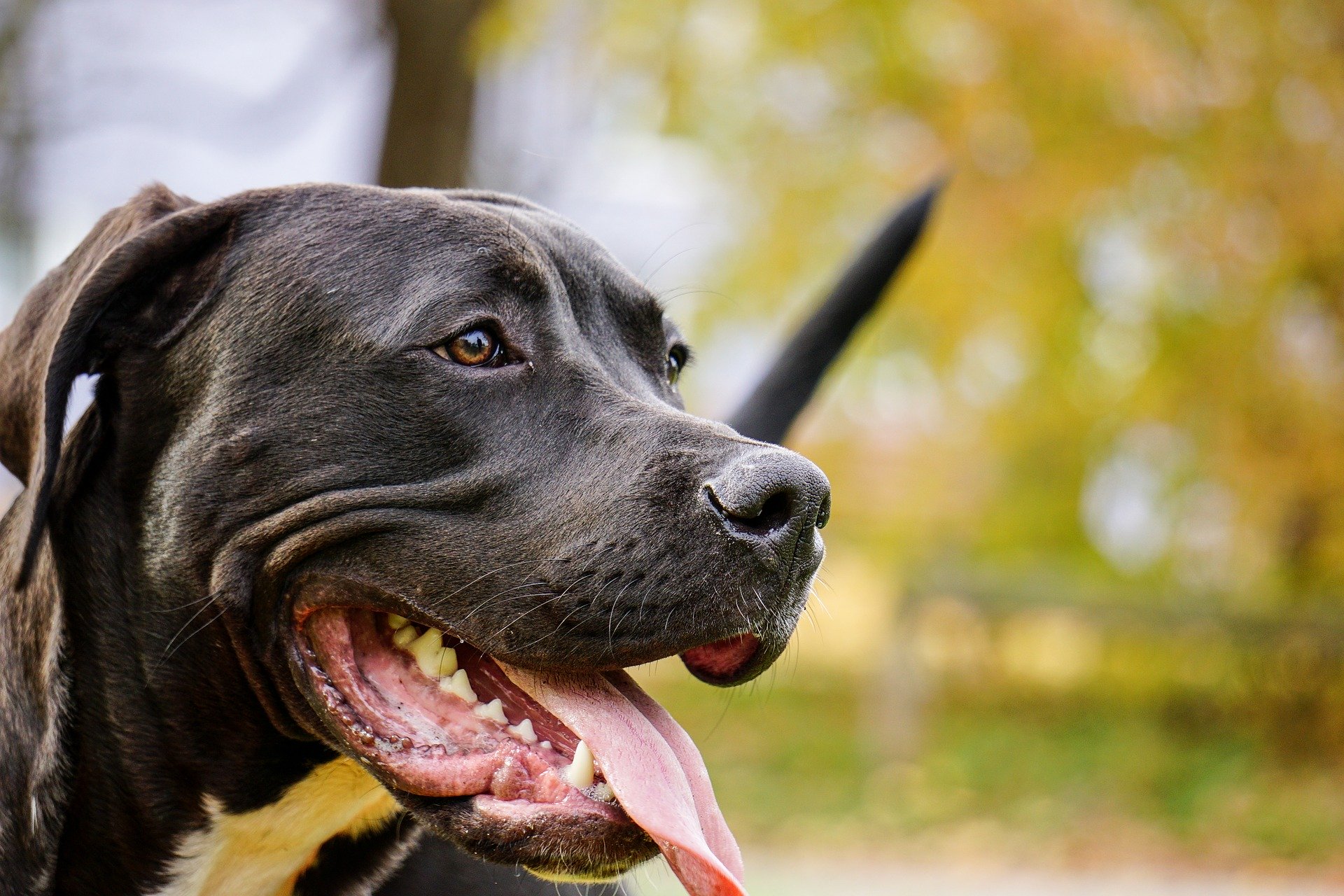
The story of Zeus, a 3 year old pit bull, is a perfect way to explain why it is so important to take X-rays before ACL surgery.
Reasons include:
. An experienced family vet or a surgeon can actually diagnose an ACL tear on X-rays. Sure, we can’t see the ACL, but we can see the consequences of the tear: too much fluid in the joint, arthritis, displacement (or dislocation) of the thigh bone and the shin bone etc.
. In order to do a TPLO or a TTA, we need to take measurements to plan the entire surgery, so X-rays are mandatory. By the way, the X-rays must be in a very specific position, and require sedation. If the leg it crooked before the patient is awake or struggling, the measurements will be off, and the outcome of the surgery may be affected.
. Before any type of repair, we need to make sure that there isn’t something else going on. It could be something benign, like a fracture. This was recently the case of Ellie, a 6 month old English Bulldog, who was thought to have a torn ACL. A simple X-ray clearly showed that she had in fact a fracture of the shin bone (tibial crest avulsion). Note how the fracture piece (red arrow) is lifted off its normal position (green arrow).
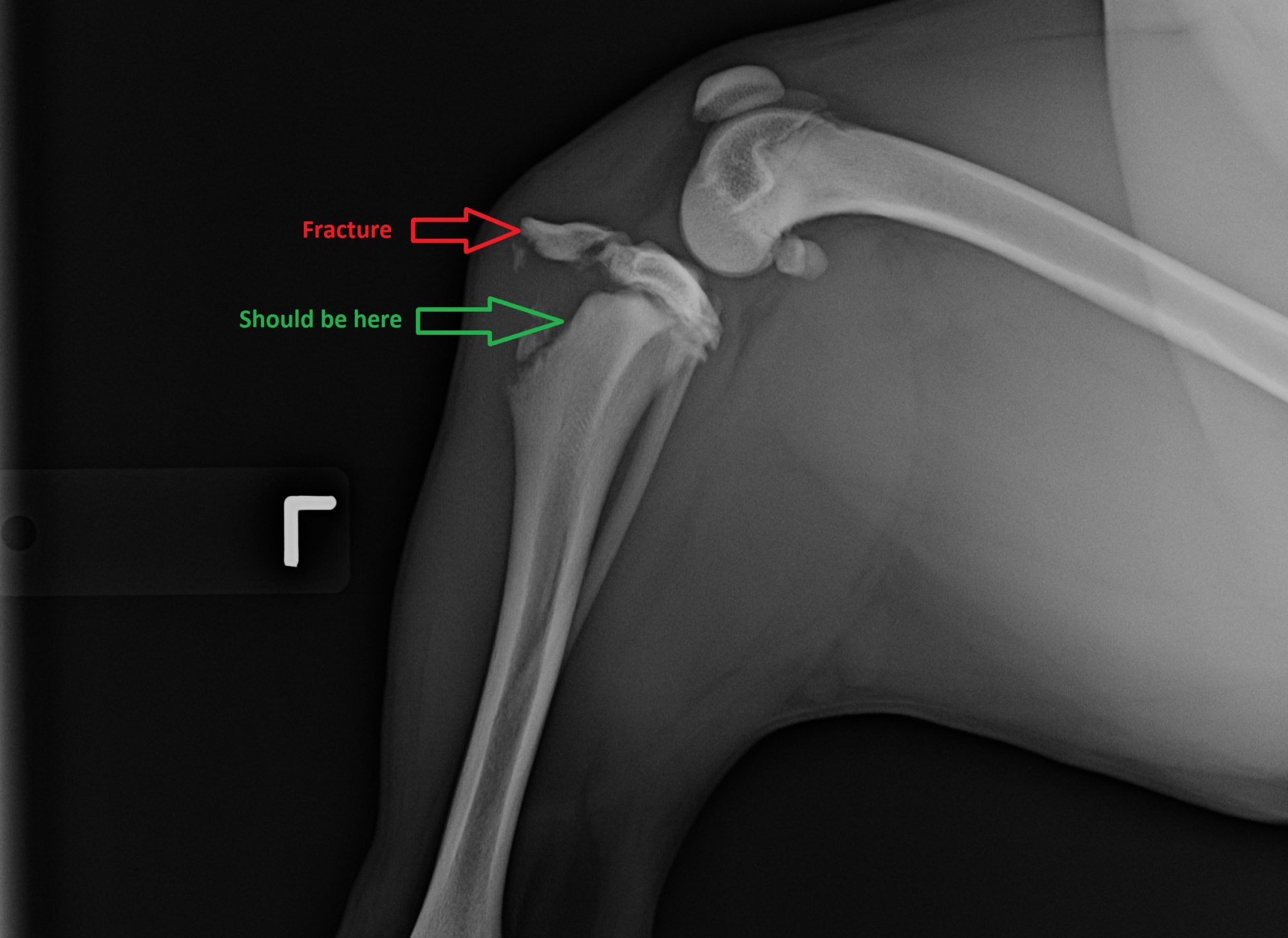
Or it could be something much worse, as in the case of Zeus.
In December of 2018, the 3 year old pit bull was limping on the left back leg. X-rays showed subtle changed. A board-certified radiologist thought it could be a partially healed fracture of the shin bone and/or a torn ACL.
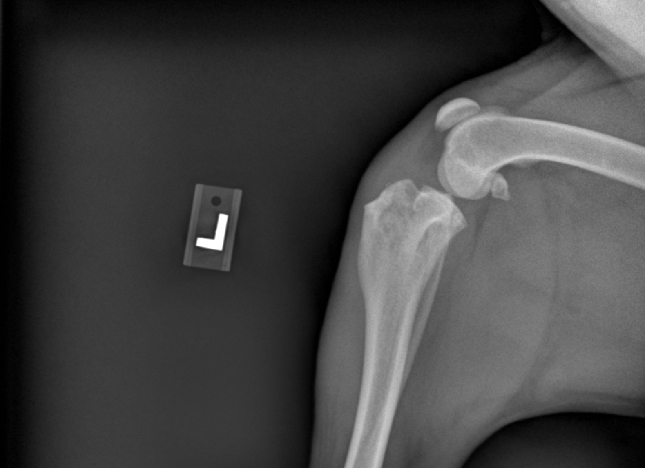
Zeus’ owner, wishing to pursue surgery, found me on my website, and asked me to do a TPLO. I referred him to a clinic where I frequently do TPLO surgeries. Surgery was delayed for various reasons.
On March 6, 2019, the day of surgery, the knee appeared unusually swollen. We repeated X-rays to be safe. Surprise… this was not at all an ACL tear. The shin bone had been literally eaten away by, most likely, bone cancer.
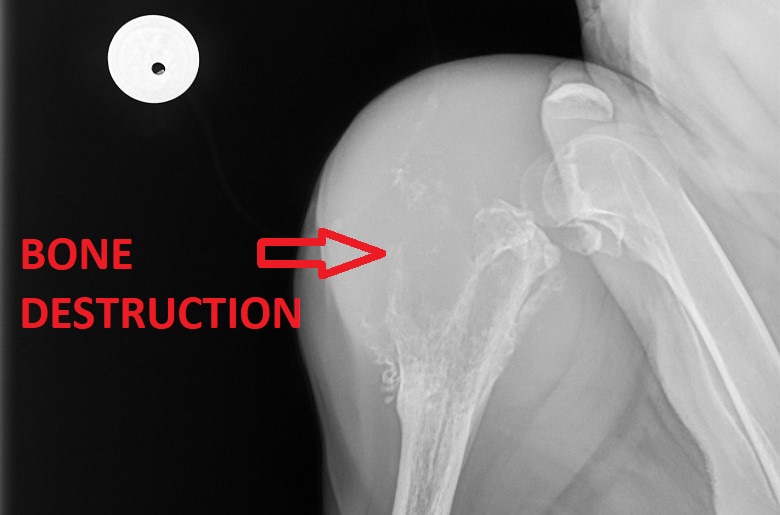
I called the owner and explained the findings. Unfortunately, the best option was amputation. Initially shocked, the owner accepted. Surgery went well and Zeus went home.
On March 7, 2019, the day after surgery, the phone update was good: “Zeus is doing well. He is getting around well three-legged. In fact, he had been only using 3 legs for a couple of months. He is eating and drinking small amounts. He has gone outside and urinated.”
Here is a video showing what a trooper Zeus was during his recovery (yes, he should have been on a leash…). He still has the Band-Aid over the incision. And he’s able to climb a few steps.
On March 13, biopsy results were back. Rather than the most common bone cancer (osteosarcoma), the cancer was hemangiosarcoma. This is an aggressive cancer of the blood vessels – in Zeus’ case, of the bone.
A few months went by, and Zeus enjoyed a happy life. Eventually, he started to limp on the right front leg. Initially, it was suspected that shifting weight to the front legs may have been responsible. Pain medications were started in August. “Zeus seems to be feeling much better since starting pain meds daily.”
Sadly, things progressed. Zeus’ family vet wrote in the medical record dated September 3, 2019: “Large visible swelling over right shoulder. Zeus is obviously in a lot of pain.”
X-rays showed that bone cancer, most likely, had spread to the arm bone (humerus). Notice how the bone looks moth-eaten.
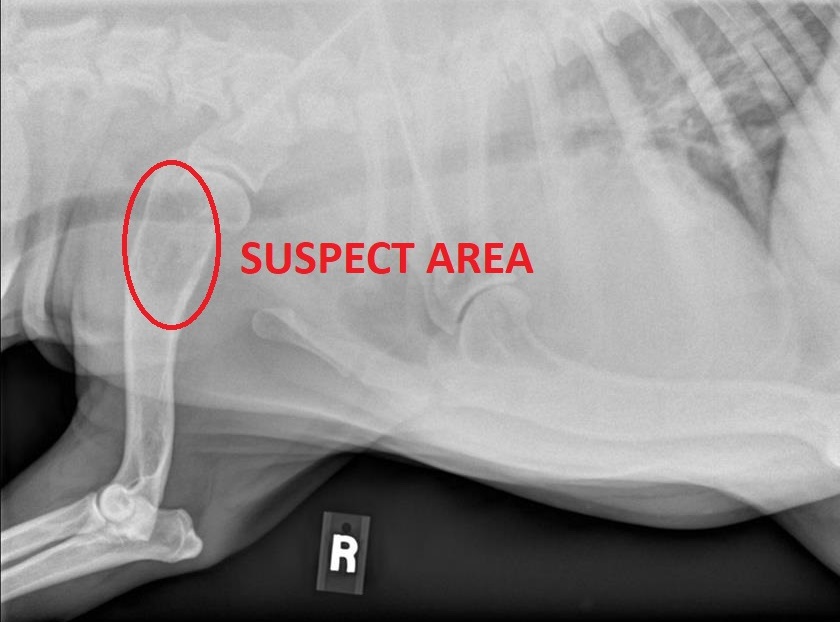
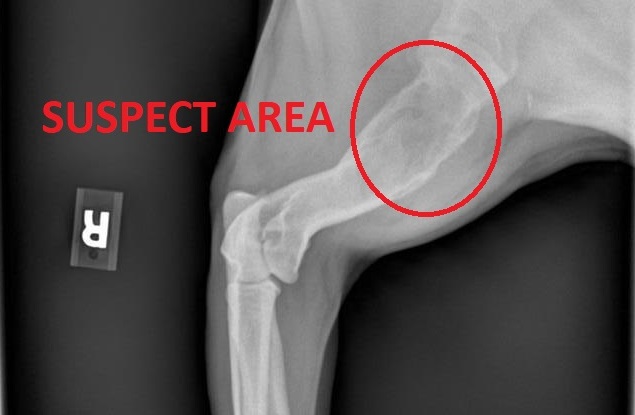
That day, Zeus was humanely euthanized.
He survived for 6 months after the amputation.
This could be the end of this blog. But I decided to call Zeus’ owner to see how he felt about this whole experience.
His comments: “Sure it was rough at times, but Zeus was happy until the end. I feel that I did everything I could for my dog. I probably did more than most people would have. But Zeus was happy and comfortable. We went to the park every day. He loved people watching. I have no regrets.”
As I always say, when we deal with a cancer patient, I’d rather have 6 months of happiness than 6 years of misery.
Zeus is a perfect illustration of that concept. Sure, amputation is an invasive surgery, but dogs bounce back very well from the surgery. They don’t care about having 3 legs. They care about being comfortable.
Zeus lived happily for 6 months after his surgery. To his owner, these 6 extra months were priceless.
Phil Zeltzman, DVM, DACVS, CVJ, Fear Free Certified

Dr. Phil Zeltzman is a traveling veterinary surgeon in Pennsylvania & New Jersey. An award-winning author, he loves to share his adventures in practice along with information about vet medicine and surgery that can really help your pets. Dr. Zeltzman specializes in orthopedic, neurologic, cancer, and soft tissue surgeries for dogs, cats, and small exotics. By working with local family vets, he offers the best surgical care, safest anesthesia, and utmost pain management to all his patients. Sign up to get an email when he updates his blog, and follow him on Facebook, too!
Lucy becomes an amputee
Lucy, a sweet 6 year old Golden, started limping in her left back leg.

Her family vet’s X-rays showed that something, most likely bone cancer, was eating her thigh bone away (femur). The blue arrow shows normal bone; the red arrow shows bone that has been either eaten away or that has created a mass.
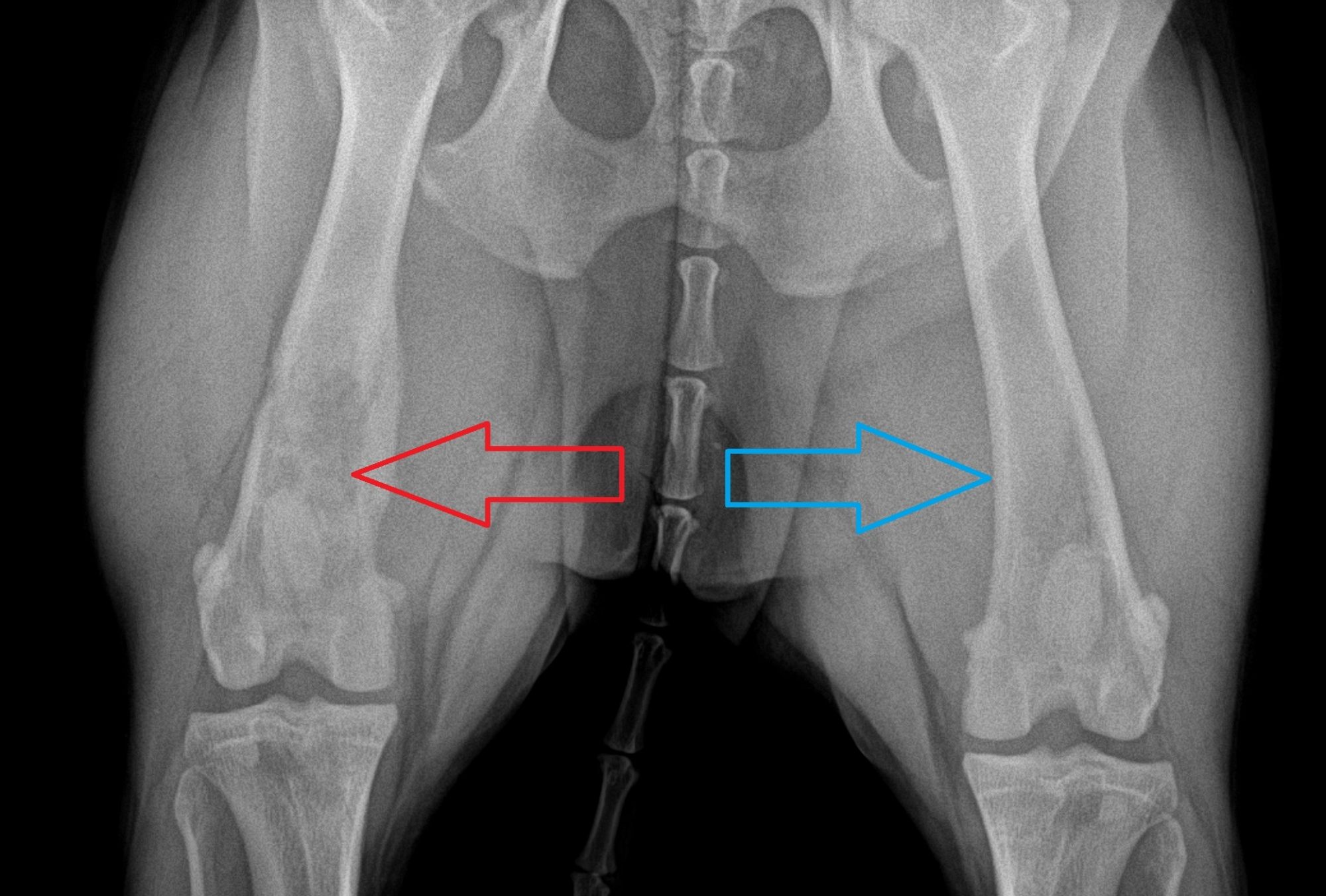
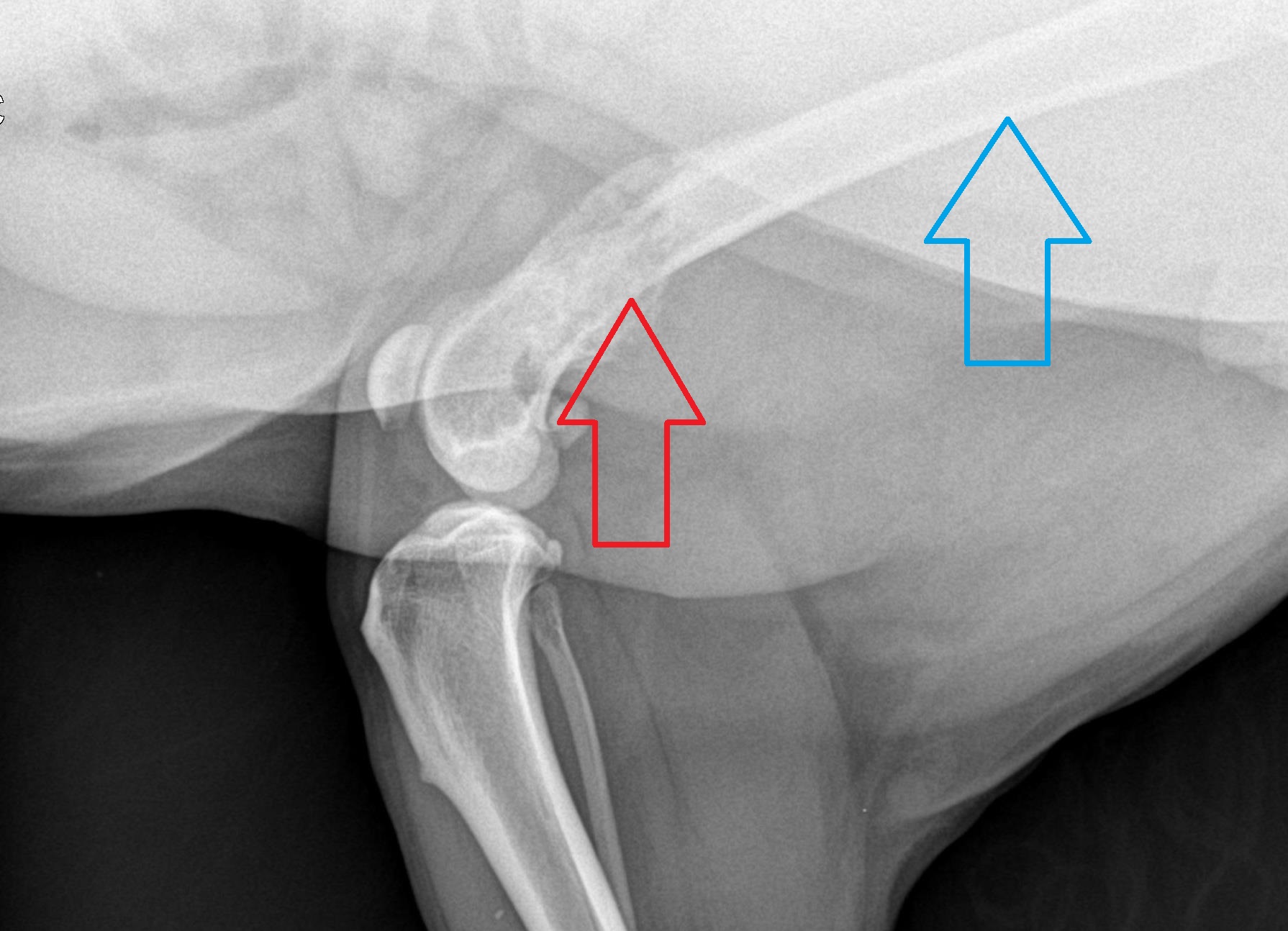
There weren’t a whole lot of options: the best course of action was to sacrifice the leg. Before that, we ensured that her blood work was normal and that chest X-rays did not show any spreading of the (presumed) cancer to the lungs.
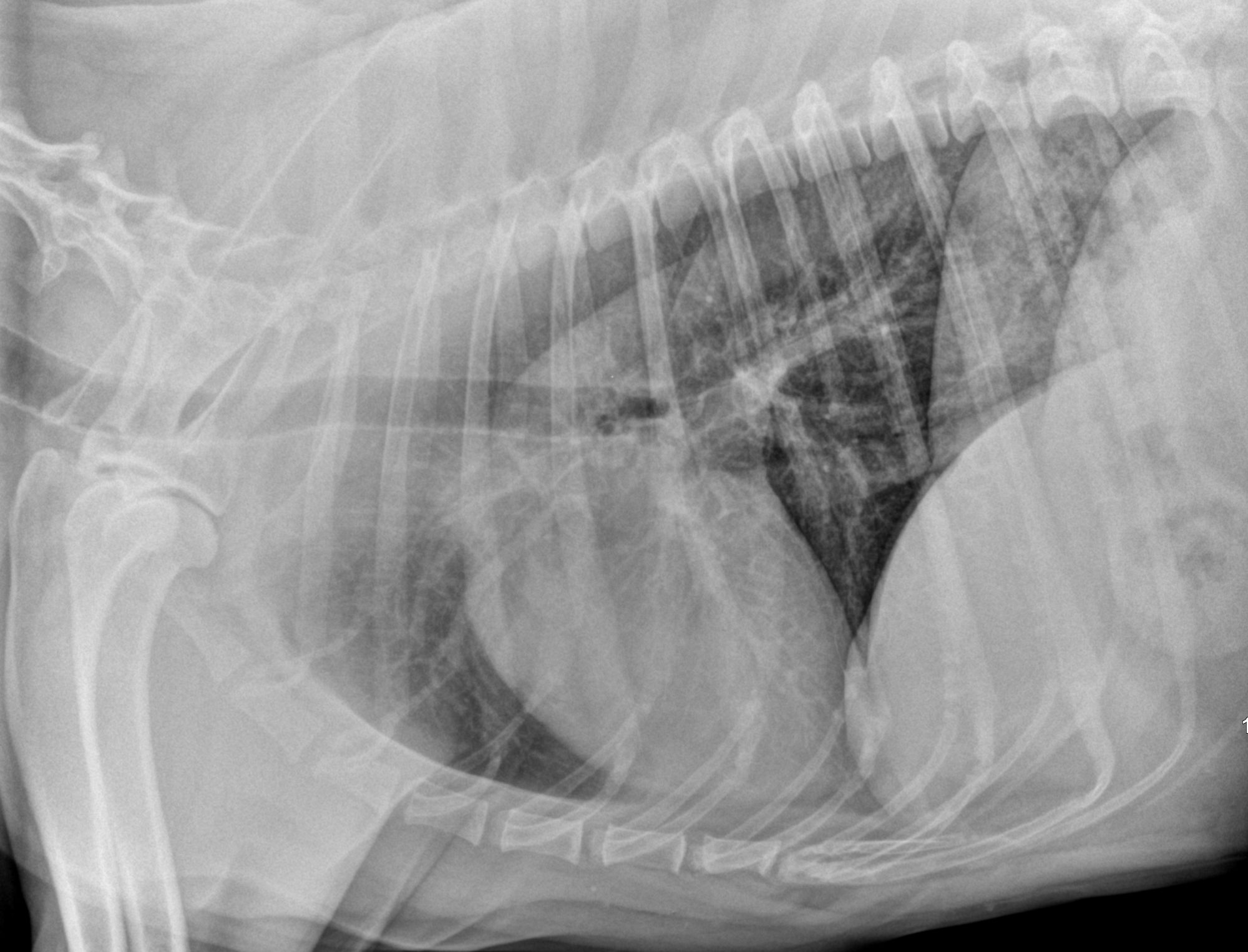
A few days later, I traveled to the practice to perform the amputation. Everything went well in surgery.
The very next day, Lucy started to walk around on 3 legs. She was comfortable and started to eat nicely.
A week later, the biopsy confirmed the suspicion of bone cancer (osteosarcoma). The next step was to discuss chemotherapy, which is recommended in the case of bone cancer.
With amputation alone for confirmed osteosarcoma, the average survival is 3 to 6 months. With amputation and chemotherapy, we hope for an average survival of at least one year. When we recommend treatment, our goal is more about quality of life than quantity of life (aka survival time).
Amputation is typically needed because of severe trauma or cancer – most often bone cancer. No pet owner ever opens a bottle of champagne when their pet needs a leg amputation. Yet it’s very important to understand and believe that virtually 100% of dogs and cats do great on 3 legs. My most surprising patient, Gator, was able to swim in the pool with 3 legs (and a life jacket).
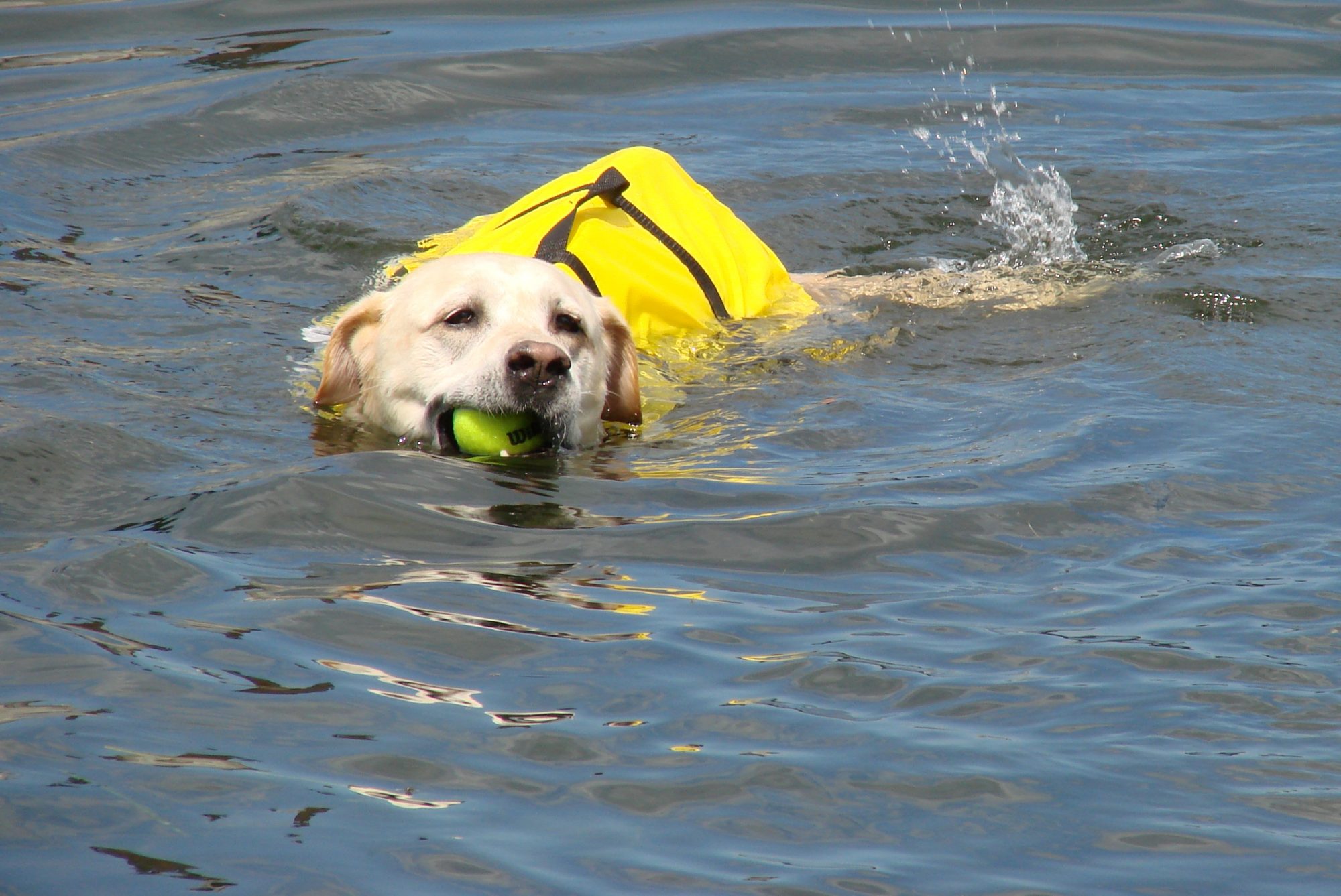
To this day, I have never met a client who has told me that they regretted their decision to amputate their pet. As long as we are on the same page, and we all decide as the pet’s best advocates, we typically get good results, regardless of the amount of time left.
In other words, we would rather have 3, 6 or 12 months of quality life, than 3 years of misery.
Phil Zeltzman, DVM, DACVS, CVJ, Fear Free Certified

Dr. Phil Zeltzman is a traveling veterinary surgeon in Pennsylvania & New Jersey. An award-winning author, he loves to share his adventures in practice along with information about vet medicine and surgery that can really help your pets. Dr. Zeltzman specializes in orthopedic, neurologic, cancer, and soft tissue surgeries for dogs, cats, and small exotics. By working with local family vets, he offers the best surgical care, safest anesthesia, and utmost pain management to all his patients. Sign up to get an email when he updates his blog, and follow him on Facebook, too!
Why you shouldn’t be afraid of a leg amputation
Lucy, a sweet 6 year old Golden, started limping in her left back leg. Her family vet’s X-rays showed that something, most likely bone cancer, was eating her thigh bone (femur) away (see red arrows).


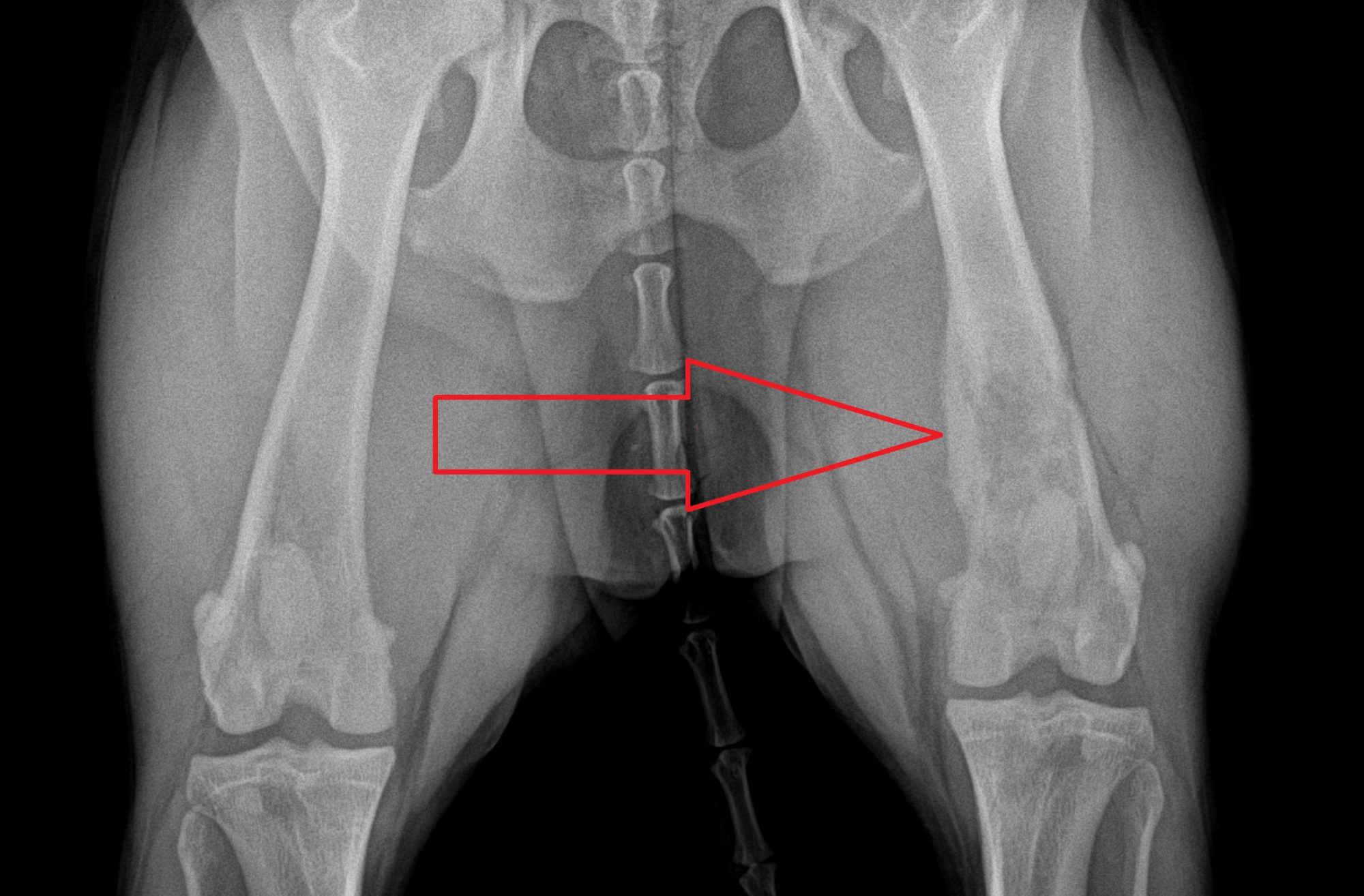
There weren’t a whole lot of options: the best course of action was to sacrifice the leg. Before that, we ensured that her blood work was normal and that chest X-rays did not show any spreading of the (presumed) cancer to the lungs.
A few days later, I traveled to the practice to perform the amputation. Everything went well in surgery.
The very next day, Lucy started to walk around on 3 legs. She was comfortable and started to eat nicely.
A week later, the biopsy confirmed the suspicion of bone cancer (osteosarcoma). The next step was to discuss chemotherapy, which is recommended in the case of bone cancer.
With amputation alone for confirmed osteosarcoma, the average survival is 3 to 6 months. With amputation and chemotherapy, we hope for an average survival of at least one year. When we recommend treatment, our goal is more about quality of life than quantity of life (aka survival time).
Amputation is typically needed because of severe trauma or cancer – most often bone cancer. No pet owner ever opens a bottle of champagne when their pet needs a leg amputation. Yet it’s very important to understand and believe that virtually 100% of dogs and all cats do great on 3 legs. My most surprising patient, Gator, was able to swim in the pool with 3 legs (and a life jacket).
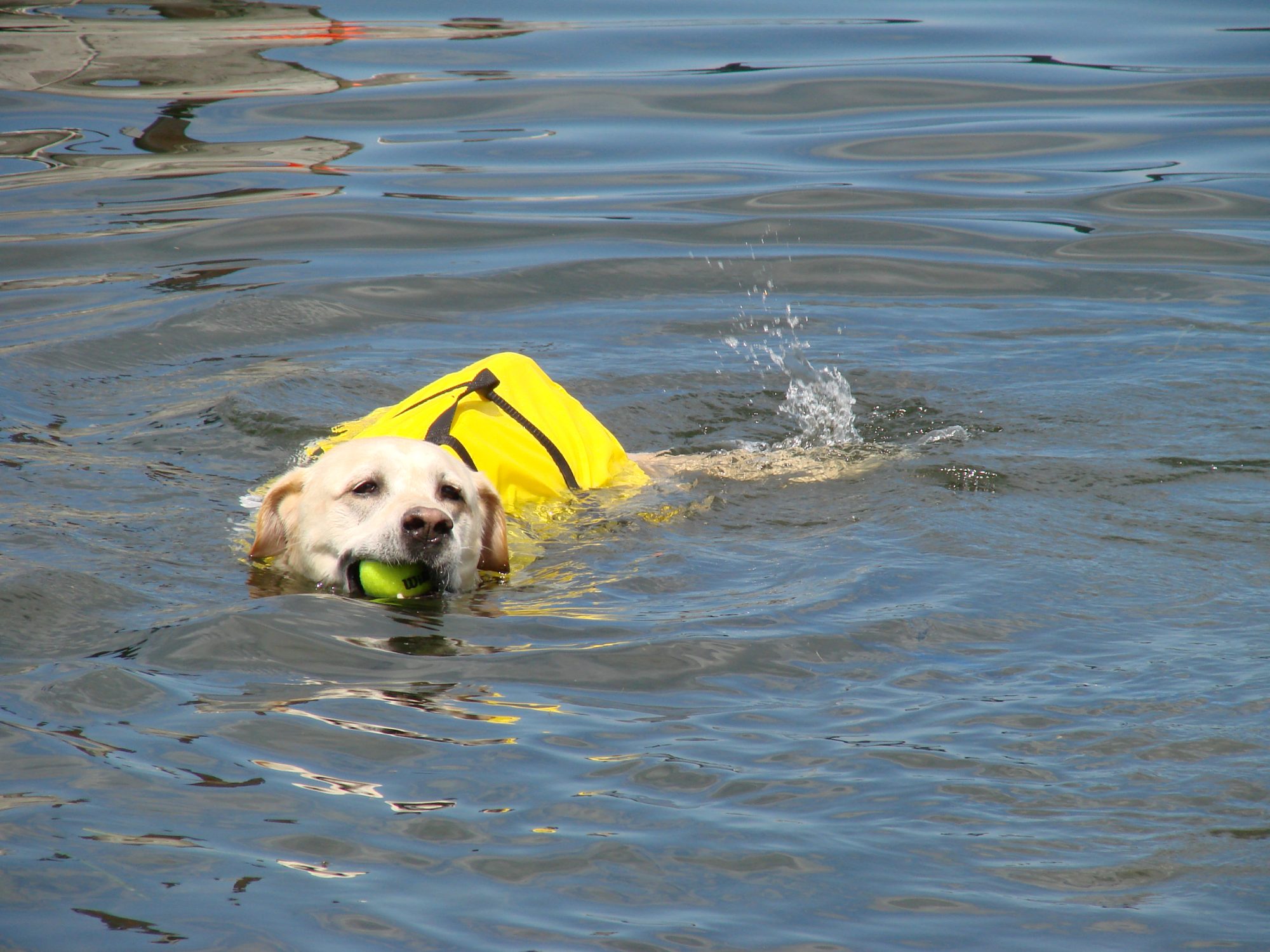
To this day, I have never met a client who has told me that they regretted their decision to amputate their pet. As long as we are on the same page, and we all decide as the pet’s advocate, we typically get good results, regardless of the amount of time left.
In other words, we would rather have 3, 6 or 12 months of quality life, than 3 years of misery.

Dr. Phil Zeltzman is a traveling veterinary surgeon in Pennsylvania & New Jersey. An award-winning author, he loves to share his adventures in practice along with information about vet medicine and surgery that can really help your pets. Dr. Zeltzman specializes in orthopedic, neurologic, cancer, and soft tissue surgeries for dogs, cats, and small exotics. By working with local family vets, he offers the best surgical care, safest anesthesia, and utmost pain management to all his patients. Sign up to get an email when he updates his blog, and follow him on Facebook, too!

